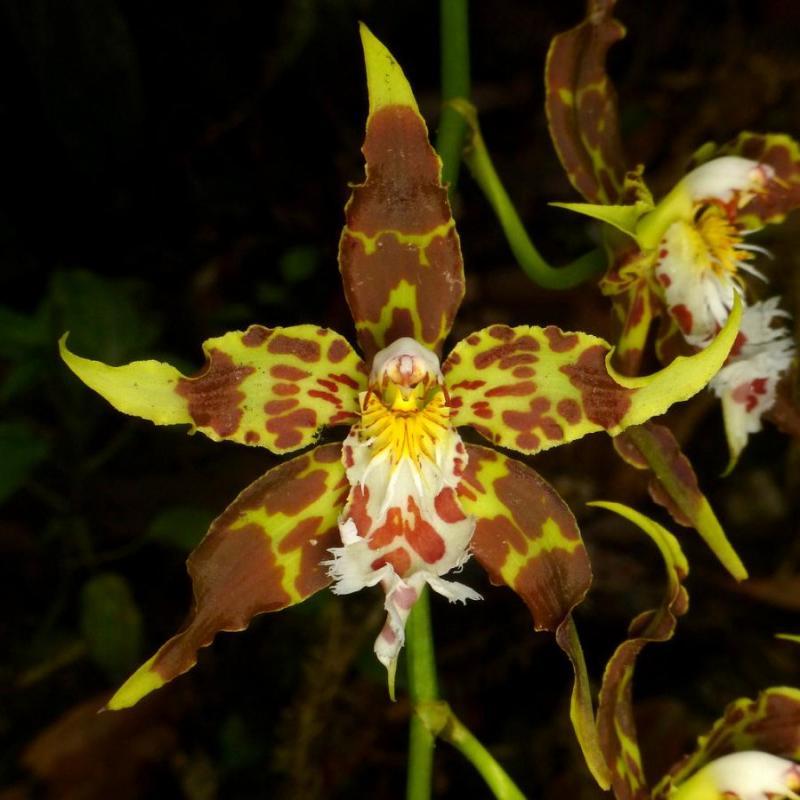Odontoglossum hallii
Also known as: Hall's Odontoglossum in the subfamily: Epidendroideae
Native to: Provincia de Loja - Ecuador
General Information
Hall's Odontoglossum is a sympodial cool to warm growing epiphytic or terrestrial orchid belonging to the sub family Epidendroideae native to Ecuador. It is named after the English Collector - Ecuador in the 19th century.
Plant Description
Sympodial. Grows to 44cm. Each new growth has numerous rigid lance shaped leaves that grow to 1.8-35cm long. Pseudobulbs grow to 4.5-9cm
Care Notes
These orchids have a fine root system that can quickly die back if left dry for too long, but also does not like to be kept wet, so water regularly but ensure that the mix is dry before watering.
Climate
The orchids are well adapted for hot weather, accompanied by sporadic, unpredictable rainfall and a generally dry climate. They can tolerate a lot of neglect as they are quite used to it, however they can be prone to underwatering and may collapse in cold, wet weather.
For this reason it's best to dedicate a sheltered, protected area for them where the watering can be controlled, such as a corner of a greenhouse or in a sheltered balcony. They can also do well hung near the roof of a shadehouse or sheltered greenhouse where they receive the extra heat but not as much water as other plants.
Grows at high elevations. Rainfall ranges from 18mm to 173mm per day, heaviest in October and lightest in January. Humidity ranges from 60% to 81%, highest in October and lowest in February. Temperature ranges from 8C to 24C, highest in February (10C to 24C) and lowest in January (8C to 21C).Fertiliser
These plants do well with slow release fertiliser at the rate of 2-3 pellets per cup (250ml) of media. Additional fertiliser during the growth period may be beneficial, but not necessary.
Potting
These plants can be sensitive to repotting though should not require repotting regularly. Repotting should be done when the mix has broken down to the point that it doesn't absorb water or holds onto water for far too long, usually the plant shows a decline in growth as well.
The mix should be free draining, with a blend of 30% inorganic ingredients such as coarse sand, gravel or perlite, mixed in with about 70% organic ingredients such as peat, leaf litter or decomposed bark. Avoid commercial potting mixes as they can vary wildly and may contain "wetting agents" that can hold onto water for loo long, causing rotting and stunted growth.
This plant does well mounted.










